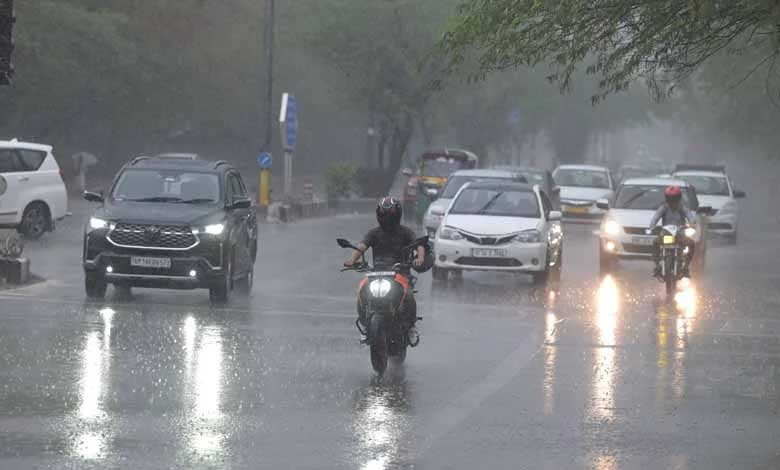Northeast Monsoon to Withdraw from Tamil Nadu by January 15; State Records Excess Rainfall and Improved Water Storage
The northeast monsoon in Tamil Nadu is set to withdraw by January 15, 2025, after delivering 33% excess rainfall. This has resulted in improved water storage levels across reservoirs, providing a strong foundation for the coming year.

Chennai: The Meteorological Department has announced that the official withdrawal of the northeast monsoon from Tamil Nadu is expected to take place on January 15, 2025.
This marks the end of a monsoon season that has delivered abundant rainfall across the state, significantly improving the region’s water reserves.
Table of Contents
Northeast Monsoon Delivers Excessive Rainfall in Tamil Nadu
The northeast monsoon, which began on October 1, 2024, has brought copious rainfall to Tamil Nadu, recording 33 percent more rain than usual, with a total of 590 mm of rainfall from October to December. This has been a crucial period for the state, as it followed a series of dry spells in previous years.
The state as a whole recorded a remarkable 1,179 mm of rainfall in 2024, surpassing average expectations and ensuring that every district received adequate rainfall. Unlike in prior years, no district in Tamil Nadu experienced deficit rainfall, a marked improvement compared to the previous years when regions like interior Tamil Nadu suffered from dry conditions.
The city of Chennai, in particular, had a significant year with its fifth consecutive year of excess rainfall, continuing a positive trend. S. Balachandran, Deputy Director General of Meteorology, highlighted that the increased easterly winds contributed to this surplus, particularly benefiting the state’s rainfall patterns. Despite fewer cyclones during this period—only four compared to six in the previous year—the state benefited from the influence of low-pressure areas and depressions over the sea, leading to consistent rainfall.
Impact of the Northeast Monsoon on Water Storage
One of the most notable effects of the monsoon’s generous rainfall has been the improvement in water storage levels across Tamil Nadu’s reservoirs. As a result, the state’s reservoirs are now nearing full capacity, with water storage levels just 12 percent short of their total capacity of 224.297 thousand million cubic feet (TMC). This is a significant achievement, as it has alleviated concerns over water scarcity in the region.
The Tamil Nadu Water Resources Department (WRD) reported that several reservoirs are now at or near full capacity. Notably, 12 reservoirs—located across regions such as Coimbatore, Madurai, and Chennai—are currently at full capacity, while an additional 18 reservoirs have surpassed 90 percent of their total capacity.
Among the state’s most significant reservoirs, the Stanley Reservoir at Mettur holds 97.51 percent of its total capacity, amounting to 91.146 TMC of water out of its 93.470 TMC capacity. This is an essential source of water for the state, and its high levels indicate improved water security.
Effects of Cyclone Fengal and Excess Rainfall in Specific Districts
The heavy rains brought on by the northeast monsoon, particularly during the period of Cyclone Fengal in December, have further boosted the water levels across Tamil Nadu’s reservoirs. Cyclone Fengal, which struck on December 1 and 2, brought unprecedented rainfall to several northern districts, rapidly filling tanks and water bodies. However, while the rains were beneficial, the cyclone also caused some damage to tanks and water bodies in northern districts like Villupuram.
Several districts, including Tenkasi, Theni, Virudhunagar, and Ramanathapuram, witnessed substantial rainfall, which contributed significantly to water storage in the state. In Tiruvannamalai, for instance, 507 out of 697 tanks are now full, while in Tiruvallur, 359 out of 578 tanks have reached capacity. Other districts such as Kallakurichi and Chengalpattu also recorded high tank fill rates, further enhancing the state’s water reserves.
Also Read | Weather Update: Kashmir Valley Faces Cold Wave with Snowfall and Rain Predicted
Looking Ahead: The End of the Northeast Monsoon
Despite the positive impact of the monsoon rains, the state is bracing for the official withdrawal of the northeast monsoon by January 15. The period from October to December 2024 has been marked by significant rainfall that has not only replenished reservoirs but also improved the state’s agricultural prospects for the year ahead.
This marks a critical time in Tamil Nadu’s weather cycle, as the state transitions into the post-monsoon season. While the northeast monsoon’s departure may lead to a dry spell, the state is entering this phase with a strong foundation of water reserves, which should provide much-needed relief during the coming months.
